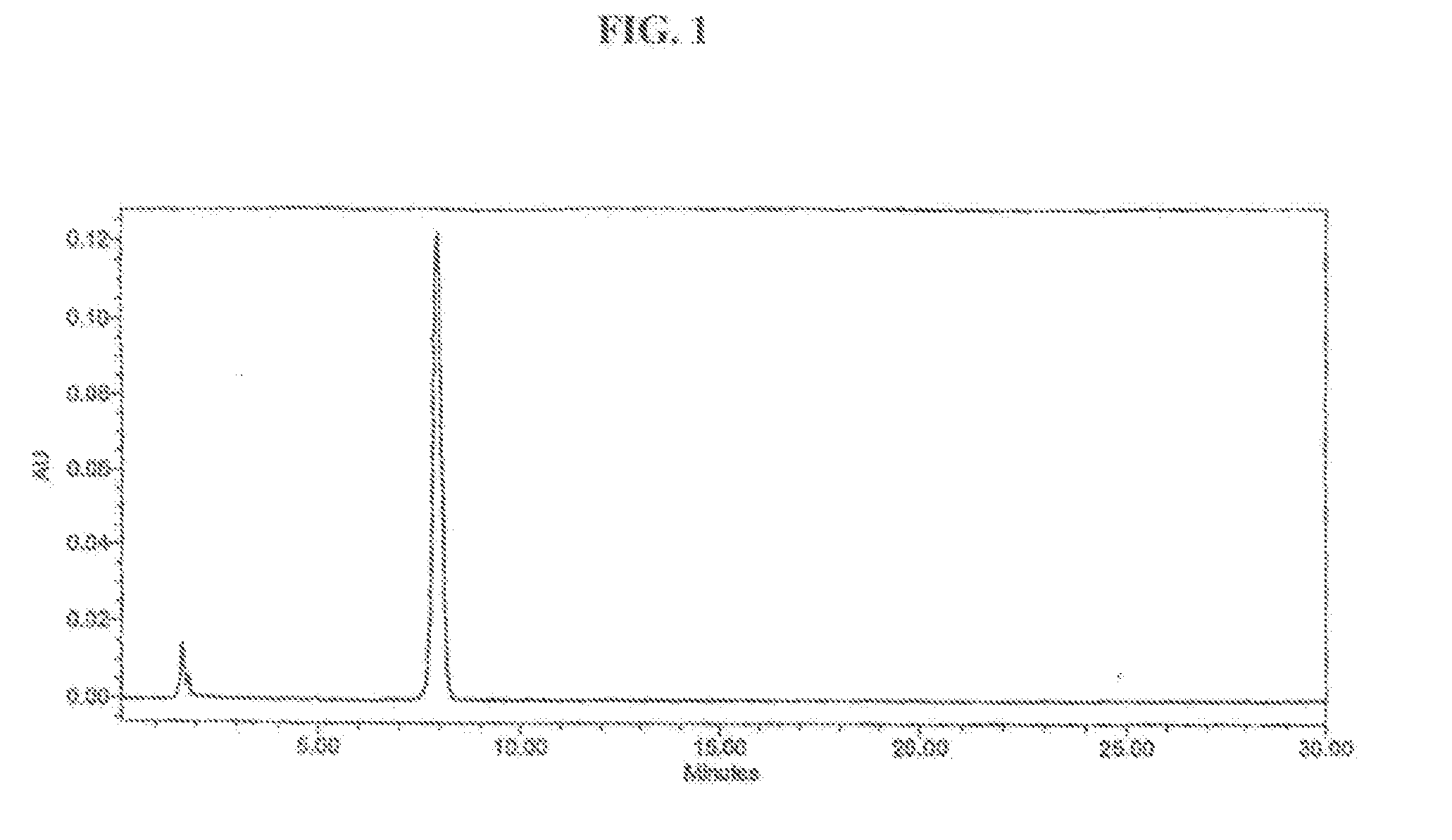Method of making medicament for treating anemia
a technology for anemia and medicaments, applied in the field of making medicaments or pharmaceutical compositions for treating anemia conditions, can solve the problems of health problems, fatigue and stress on the body, inadequate production of rbcs,
- Summary
- Abstract
- Description
- Claims
- Application Information
AI Technical Summary
Benefits of technology
Problems solved by technology
Method used
Image
Examples
example 1
Laboratory-Scale Preparation of Cucurbitacin B and Cucurbitacin D
A) Crude Extract
[0051] One kilogram of cucurbitacin-containing plant, Trichosanthes, is crushed into small pieces and oven dried. 40% ethanol is added into the Trichosanthes for extraction in a 5 L bottle (ratio approximately: 1 kg herb: 4 L extraction solvent). The mixture is mixed well and incubated in a 60° C. ultrasonicator over night with sonication occasionally. Then the insoluble substance is removed by passing the mixture through a cheese cloth. Then the sedimentation is spun down and clear fitrate is collected.
B) Solid Phase Purification
[0052] The extract, i.e., the clear filtrate from step A, is further purified by solid phase extraction method using C18 column. The extract is firstly loaded into the absorbent C18 and the cucurbitacins are eluted by ethanol. The cucurbitacin-containing eluent is collected in sample collection tube. The eluent is then rotary evaporated to a small volume. Ethanol is added...
example 2
Large-Scale Preparation of Cucurbitacin B and Cucurbitacin D
A) Crude Extract
[0056] Twenty kilograms of cucurbitacin-containing plant, Trichosanthes, are crushed into small pieces and oven dried. 40% ethanol is added into the Trichosanthes for extraction in a 100 L reaction tank (ratio approximately: 1 kg herb: 4 L extraction solvent). The mixture is mixed well and incubated in a 60° C. with constant stirring. The insoluble substance is removed by passing the mixture through a metallic mesh. Then the extract is allowed to settle at room temperature for overnight and the upper clear solution is obtained.
B) Solid Phase Purification
[0057] The extract is passed through a large column packed with DM11, an absorbent, and cucurbitacins adhered on the resins are eluted by ethanol. The eluent is concentrated and adjust to ethanol content below or equal to 40%. It is then purified by solid phase extraction method using C18 column. The extract is loaded into the absorbent (DM11) and cucu...
example 3
Conversion of Cucurbitacin B to Cucurbitacin by Deacetylation
[0061] 15 mg of cucurbitacin B from Example 1(D1) or Example 2 (D1) is added to a mixture containing excess amount of potassium carbonate (Aldrich) in dry methanol. The mixture is stirred under nitrogen or argon at room temperature for 3 hours and is quenched with excess amount of saturated ammonium chloride (Aldrich). The aqueous mixture is then extracted with ethyl acetate twice. The salt in the combined organic extract is removed by passing through a short pad of silica gel (Merck) and eluted with ethyl acetate. The solvent is removed by rotary evaporation and the resultant crude oil is suspended in methanol for separation according to the method in Example 1(D1) or Example 2 (D1).
PUM
 Login to View More
Login to View More Abstract
Description
Claims
Application Information
 Login to View More
Login to View More - R&D
- Intellectual Property
- Life Sciences
- Materials
- Tech Scout
- Unparalleled Data Quality
- Higher Quality Content
- 60% Fewer Hallucinations
Browse by: Latest US Patents, China's latest patents, Technical Efficacy Thesaurus, Application Domain, Technology Topic, Popular Technical Reports.
© 2025 PatSnap. All rights reserved.Legal|Privacy policy|Modern Slavery Act Transparency Statement|Sitemap|About US| Contact US: help@patsnap.com



